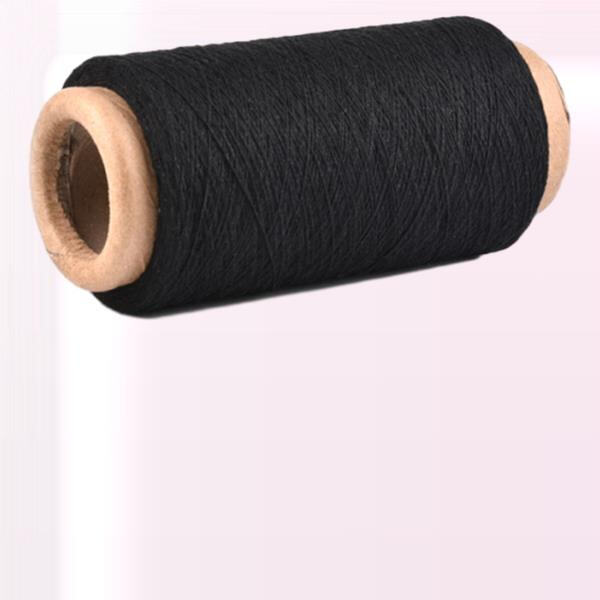Tel:+86 13967879487
Adres e-mail:[email protected]
Tel:+86 13967879487
Adres e-mail:[email protected]
Czy kiedykolwiek przystanąłeś, aby pomyśleć, skąd pochodzą twoje ubrania? Zanim nacisniesz przycisk zakupu na tej koszulce, warto wiedzieć, że wszystko zaczyna się od czegoś, co nazywamy "nicią". Wprowadzenie: "Nica jest elastyczna", "nica wykonana jest z giętkiego materiału bawełnianego. Szeroka gama odzieży wykonana z nitki bawełnianej (np. koszula, spodnie, płaszcz itd.)." Dowiadujemy się, że cena nitki bawełnianej w różnych okresach może wpływać na zmieniające się ceny. Obecnie cena nitki bawełnianej rośnie, a to ma wpływ na cenę naszych ubrań!
Główny powód, dla którego ceny waty bawełnianej będą rosły, to "popyt globalny. &" To oznacza, że na całym świecie ludzie chcą kupować coraz więcej rzeczy wykonanych z waty bawełnianej." No cóż, a co jeśli wszyscy postanowiliby, że chcą kupić ten sam zabawek; im więcej osób chce czegoś, tym zazwyczaj wyższa cena! Dlatego to samo dotyczy nitek bawełnianych. Ale w miarę jak wzrasta popyt na odzież z bawełny, spowodowuje to podwyżki cen, staje się drożej dla firm, aby zakupić nitki, które będą potrzebowały.
Inny czynnik inflacyjny dotyczy "produkcji. za dużo bawełny na ziemi"e; - chodzi o to, ile bawełny rolnicy sadzą i zbierają. Jeśli nie produkowana jest wystarczająca ilość bawełny, nie będzie wystarczająco dużo nici do przędzenia ubrań, które wszyscy chcą kupić. Rolnicy muszą zasadzić wystarczająco dużo bawełny, aby uzyskać potrzebną ilość nici dla wszystkich, którzy jej potrzebują, a to jest naprawdę kluczowa sprawa.
Może nadejść czas, kiedy nie będzie wystarczająco dużo bawełny, co znane jest jako "niedobór". I kiedy wystąpi niedobór bawełny, może być trudniej dla firm jak Lucky Textile zdobyć wystarczająco dużo bawełnianej nitki, aby wyprodukować całą odzież, jakiej chcą. Wtedy, jeśli wystąpi niedobór, rzadkie posiadacze bawełnianej nitki mogą domagać się wyższych cen. To z kolei oznacza, że Lucky Textile musi płacić więcej za bawełnianą nitkę, którą używa do produkcji koszulek i spodni, które widzisz w sklepach. To często sprawia, że muszą pobierać wyższe ceny za nitkę, co niestety może oznaczać, że będą musieli również pobierać od ciebie więcej za swoją odzież.

Więc, na przykład, jeśli byłoby obfitość bawełny dostępnej do sprzedaży i nie zbyt wiele potencjalnych nabywców, to cena zwykle by spadła. Ale jeśli nie ma wystarczająco dużo bawełny i wszyscy chcą jej kupić, będzie ciśnienie w górę na cenę! Dlatego cena nici bawełnianej może się zmieniać codziennie lub co tydzień. To jak kontrolowanie gry podaży i popytu, cena może się różnić w zależności od potrzeb ludzi.

Lucky Textile musi również myśleć o czymś, co nazywamy „łańcuchem dostaw”. „Łańcuch dostaw to sieć osób lub firm, które współpracują, aby stworzyć i sprzedać produkt. Oto jak działa łańcuch dostaw Lucky Textile: wszystko zaczyna się od farmerów, którzy uprawiają bawełnę. Następnie przechodzi do fabryki produkującej nitki bawełniane. Potem nitki trafiają do innych fabryk, które przekształcają je w ubrania, które nosimy. W końcu ubrania docierają do sklepów, abyś mógł je kupić.

Jeśli cokolwiek pójdzie nie tak w tej łańcuchu dostaw, może to doprowadzić do większych trudności lub wyższych kosztów uzyskania przez Lucky Textile potrzebnych im nitek bawełnianych. Na przykład, jeśli zakład produkujący nitki zamknie swoje drzwi z powodu huraganu lub jakiejś innej katastrofy, Lucky Textile będzie musiała szukać innego zakładu, aby zamówić nitki. Może to zająć więcej czasu i być droższe, co ostatecznie spowoduje wyższe ceny ubrań w sklepach.
Firma dostarcza różne certyfikaty zgodnie z potrzebami klientów. Dodatkowo posiadamy w swojej ofercie sprzęt do testowania ceny przędzy bawełnianej. Każda partia produkcji jest dokładnie testowana po jej zakończeniu i wywożona do innych krajów po przeprowadzonych testach. Możliwość prowadzenia rozmów w języku portugalskim, hiszpańskim, rosyjskim i wielu innych, a także 100% gwarancja obsługi posprzedażowej. Skupiamy się na długoterminowym partnerstwie, a nie tylko jednorazowej sprzedaży.
Głównym przedmiotem działalności firmy jest produkcja przędzy recyklingowej, w tym ceny przędzy bawełnianej, rękawic i siatek hamakowych, jak również innych przędz tkaninowych. Możliwe jest projektowanie indywidualnych kompozycji przędzy, a także oferujemy 40 różnych kolorów. Dzięki ponad 30-letniemu doświadczeniu w przemyśle produkcyjnym gwarantujemy najwyższą jakość. Nasi klienci znajdują się na całym świecie. Nasz wykwalifikowany zespół techniczny i posprzedażowy zapewnia doskonałą obsługę.
Lucky Textile Cangnan Factory Ltd, jedno z największych przedsiębiorstw produkujących regenerowane nici w Chinach, posiada ponad 25 linii produkcyjnych na powierzchni 44 000 metrów kwadratowych. Dysponujemy nowoczesnymi maszynami i urządzeniami importowanymi z kraju oraz ceną bawełnianej przędzy. Naszym celem jest bycie przyjaznym dla środowiska, innowacyjnym i zrównoważonym.
Wysyłamy miesięcznie 120 kontenerów z naszej fabryki do ponad 500 klientów na całym świecie. Posiadamy profesjonalny zespół logistyczny oraz gwarancję posprzedażową i cenę bawełnianej przędzy. Obsługa online 24/7 dostępna przez 24 godziny dziennie. Jesteśmy zaangażowani w szybkie i bezpieczne dostarczanie zamówień. Doceniamy każde zamówienie, które otrzymujemy. Zapraszamy również do odwiedzenia naszej firmy.